Walking is pretty much universally considered the safest form of exercise, right? Well, yes, but it’s not completely without its risks. If your walking routine is interrupted by aches and pains, you should do what you can to address them early on. What seems like a minor pain could worsen and prevent you from exercising altogether. Here are some tips for beating walking pain and preventing some common injuries.
1. Plantar Fasciitis
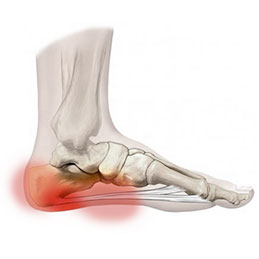
What’s going on? Your plantar fascia, the thick band of tissue connecting your forefoot to your heel, has developed small tears from repeated strain. The pain is caused by stiffening in response to stress. Watch out for plantar fasciitis if you’re a chronic pronator – someone who rolls their foot outward as they walk – with high arches.
Beat it! Stretch your plantar fascia out when you first begin to notice the stiffness. Sit with your ankle crossed over the opposite thigh and pull your toes back towards the shin with your fingers and palm until you feel a stretch in your arch. Hold for 10-12 seconds and repeat 10 times. You can also roll your sole out on a tennis or golf ball.
Choose shoes that stiff enough in the middle to support your arch. Custom fitted orthotics can help absorb some of the impact on your heel while walking.
2. Ingrown Toenails
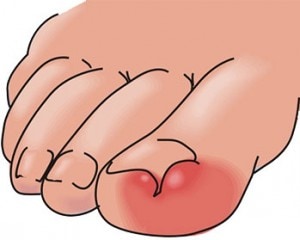
What’s going on? Your toenails are growing sideways into your skin instead of outward. The biggest culprit is a shoe that’s fitting too tight on your toes. The repetitive stress of your toenail beating against the wall of your shoe with each step causes the nail to grow awkwardly sideways. You might see some bleeding under the nail, but if you don’t address the worsening problem the nail could fall off.
Beat them! Get yourself some shoes that fit right. You should be able to wiggle your toes freely. Plan your shoe shopping for the afternoon: your foot will have swollen to about the same size as it swells during exercise. Clip your toenails straight across – no rounded corners!
3. Bunions
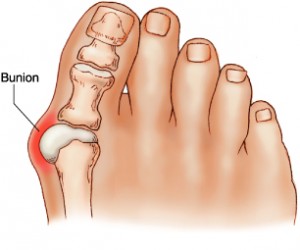
What’s going on? Bunions are the result of maligned bones. The big toe bone begins to point towards the lesser toes while the first metatarsal supporting the big toe, juts outward, causing the awkward angle that pops out. Bunions have many causes, but people with low arches – aka “flat feet” – are more prone to bunions than others.
Beat them! Buy walking shoes that have a nice, wide toe box and doesn’t put undue pressure on your big toe. Cheaper option? Have your current shoes stretched. Once a bunion develops, you can treat it conservatively by cushioning it with a pad and icing it for 15-20 minutes after exercising. For severe bunions, check with your foot and ankle specialist for treatment options.
4. Achilles tendinitis
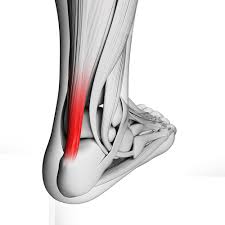
What’s going on? Your Achilles tendon, the stretch of tissue that runs from your calf muscle to your heel, is overstrained from your new or increased walking regime. This typically occurs in new walkers, who have pushed themselves too hard at first.
Beat it! Gradually build up the intensity of your walking routine to condition your muscles for the stress of repeated foot flexing. You can start by reducing your mileage, avoiding uphill walking, or alternating walking with other low-impact exercises. Stretching your calf can also help you avoid irritating your Achilles tendon. Already hurting? Ice the area for 10-15 minutes, three times per day to cut down on pain and swelling.
5. Morton’s neuroma
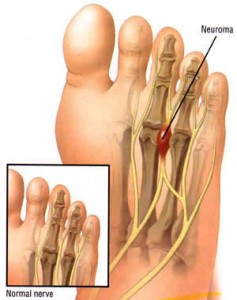
What’s going on? A neuroma occurs when the tissue that surrounds a nerve thickens and is more commonly known as a “pinched nerve.” Neuromas typically form between the third and fourth toes. Women are much more likely to develop neuromas than men, possibly because of the way their feet are shaped, but more probably because of the way they are frequently jammed into small high heels or tiny, flimsy flats.
Beat it! Make your shoe choices carefully. Wear shoes that give your toes plenty of room and avoid wearing high heels. You don’t have to kick your stylish shoes to the curb completely: commute in comfortable walking shoes and then change into your heels or flats. Custom-fitted orthotics can help in cushioning your pressure points.
6. Shin Splits
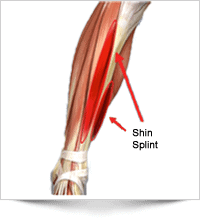
What’s going on? The muscles and tissues surrounding your shins have been overworked. Your stronger calf muscles are pulling on the weaker muscles, causing stress and inflammation. Walking too much, or too fast, before your muscles have grown accustomed to your new routine, can strain your shins with each step. The deep flexing required for walking uphill can also cause shin splints.
Beat them! You can ease the pain with ibuprofen and icing, but you’ll also need to significantly slash your mileage for 4-6 weeks to give your muscles plenty of time to heal. This might seem obvious, but if walking hurts, your body is telling you to stop walking. Try other low-impact exercises in the meantime like swimming or biking.
To prevent shin splints, focus on strengthening the weaker muscles in your shins. While standing, lift your toes 15-20 times, rest, then repeat. You can intensify this workout with a 2lb ankle weight.
If you would like more information, we encourage you to call us at (877) 989-9110 or make an appointment at here.
- Revolutionizing Extremity Imaging: UFAI’s Open MRI for the Foot and Ankle - October 21, 2023
- Youth Sports and Heel Pain: Should Kids Play with Pain? - April 4, 2023
- All About Foot Arch Pain and Foot Arch Cramps - March 15, 2021
Thanks for sharing this very helpful information. I used to have problems related to my Achilles tendon but it is not very serious problem now because I had chosen the right shoes as well as keep stretching and exercising.
I’ve gotten shin splints a lot of times in high school. I agree that lifting your toes and stretching can be really helpful. I also recommend checking the shoes you are working out in. If the shoes don’t support your feet properly, it could be the cause of your shin splints.